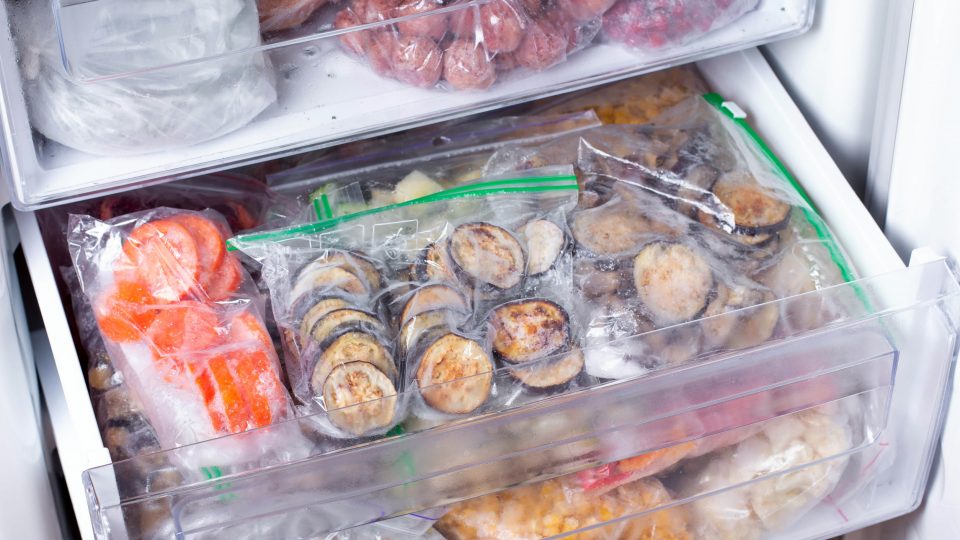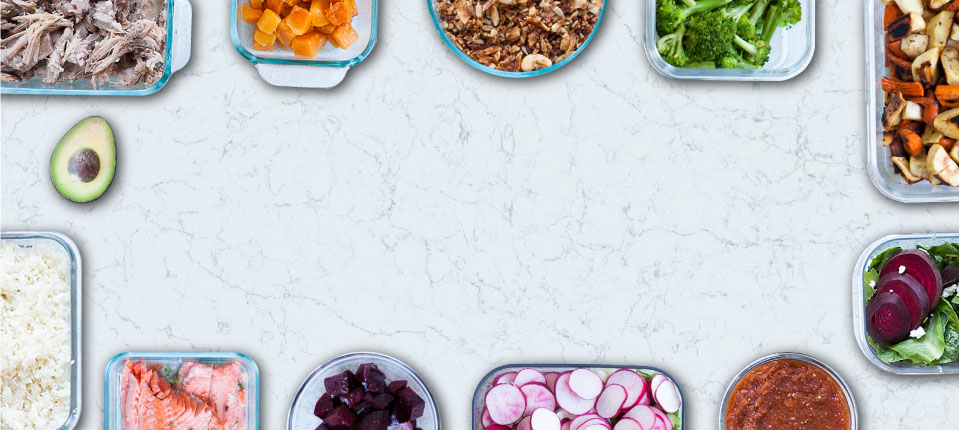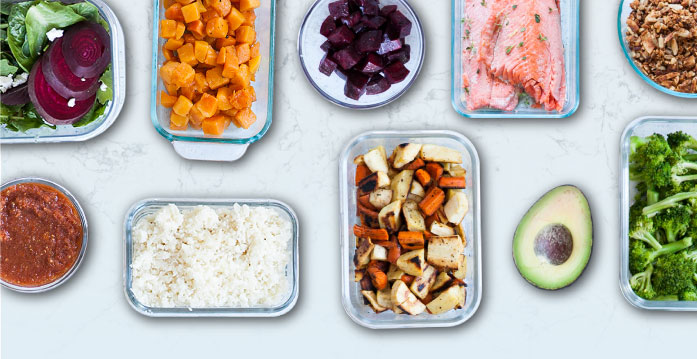Meal planning with freezer meals just may be the time-saver and dinner hack you’ve been missing. But freezers do not cook – you may be thinking – so what exactly is freezer cooking? In a nutshell, freezer cooking means cooking and freezing both meals and separate ingredients to use later on.
This can be making and freezing a double or triple batch of a casserole-based dish, like shepherd’s pie or lasagna, popping it in the oven weeks later, and sprinkling it with a handful of fresh herbs once you set it out on the table. Or making and storing a big batch of sauce, broth, or pesto to whip up into a quick and easy dinner.
But before you dismiss freezer cooking as something only for the ultra-organized, freezer cooking is a great meal planning technique for anyone who wants to spend a little less time in the kitchen without sacrificing the quality of home-cooked food. You can be the person who consistently shops, preps, and cooks weeks in advance, or you can double batch and freeze recipes when you think of it.
Regardless of your style, you’ll be getting it done now, so you don’t have to do it later.
Top freezer cooking tips to up your meal planning game
One-pot wonders including casseroles, stews, and chilis usually freeze well. You can also freeze smaller meals fit for one person, like these breakfast burritos, individually portioned for quick serving later.
Stews and chili can be defrosted in the fridge or microwave. For casseroles, you can thaw for several days in the refrigerator or place the frozen casserole covered in a COLD oven, turn the temperature to 350F, and bake until the internal temperature reaches 165F (this may take an hour or more).
Rice or other cooked grains can be frozen flat (up to 2 months) in a large ziplock bag. Use chopsticks or knife to score into single servings so you can easily break off only just as much as you need later. (See the video attached!)
Use an ice cube tray to freeze leftover sauces, wine, milk, cream, chicken broth, herbs in olive oil, etc for up to 5 months.
Fresh meat does well when frozen. Just be sure to defrost it in the fridge (rather than in the microwave or at room temperature) so that you can refreeze, if necessary in a completed recipe. When freezing cooked meat, such as ground beef, freeze it into half-pound or one pound portions so that you can easily grab and use them later. Another trick is to marinate meat in plastic bags before placing it in the freezer for an easy ready-to-grill or broil protein.
Separate salmon or other fish into single servings and wrap them in parchment paper before freezing. They will then cooks quickly from frozen in an air fryer or oven.
Fruit, baked goods, and raw hamburgers do best when quickly frozen in a single layer on a baking sheet. Then move these items into long-term storage in an airtight ziplock. To ensure they don’t stick together, layer parchment paper between each piece.
Use frozen fruits and greens in sauces, jams, salsas, and smoothies. Because of their water content, fruit and greens will have a noticeable change in texture when going from frozen to thawed.
Splurge on good freezer bags. Air is what causes freezer burn which could spoil your efforts.
As a general rule, you want to season and salt food lightly before freezing and add more spices later when reheating.
Some foods fare better in ultra-cool temps than others. Here are some of the most commonly asked questions about freezer cooking…
Can I freeze cheese?
You can freeze cheese and other dairy products, but it doesn’t always hold up well. Sour cream tends to separate and become watery. The texture of cream cheese and other cheeses will be crumbly and less creamy.
You can use frozen cheese for cooking or baking, just don’t expect frozen cream cheese to make a perfect cheesecake. You can also add cornstarch to shredded cheese to prevent clumping, and freeze up to 4 months. See tips for thawing milk below.
Can you freeze milk?
Milk can last for several months in the freezer but is best when used within a month. After that, it will begin to separate and turn grainy.
Milk can take on flavors of other foods in the freezer, so make sure it’s stored in an airtight container. And as with any liquid, milk expands when frozen, so leave about an inch and a half of space at the top to avoid a broken container.
To thaw, simply leave frozen milk in the fridge to thaw overnight. If you’re in a rush, you can also defrost frozen milk in a sink or bowl of cool water or even in the microwave, but for safety, do not thaw milk at room temperature.
Milk with higher fat content separates more when thawed, so make sure to shake thoroughly. And if the texture is not up to your standards for drinking, it’s still perfectly fine to use for cooking.
Can you freeze mushrooms?
Mushrooms can be frozen with some caveats. While you can freeze them raw, their texture will be best if frozen after sauteeing. If frozen raw, they may take on a rubbery texture when you go to use them, and unless they’re quite fresh, mushrooms may become slimy when thawed.
Freeze your sauteed mushrooms in a single layer on a piece of parchment paper on a baking sheet. When completely frozen, transfer to an airtight ziplock bag.
Unlike meat, it’s best to use frozen mushrooms without thawing them first, so toss them directly from the freezer into the soup, stirfry, or on top of the homemade pizza you’re serving.
Can you freeze avocados?
You can freeze avocados for up to several months, but keep in mind they will not retain their creamy smooth texture when defrosted. After thawing, they become slimy, watery, and mushy. Frozen avocados are best used in smoothies.
You can freeze avocados sliced or mashed, but freezing a whole peeled and pitted avocado is the easiest method. In any case, you should always cover the green flesh of the cut avocado with lemon juice before freezing to prevent browning.
Can you freeze eggs?
While you can freeze whole eggs, you don’t want to do it while they’re still in their shells. Instead, crack them into ice cube trays or mini muffin tins and then freeze.


